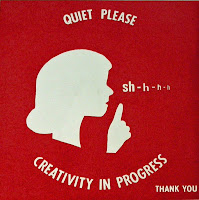 In my last post, I encouraged readers to increase their observation skills by looking closely as a tool to enhance creative thinking. I even described my own experience with this new way of looking at the world. I continued that exercise on my recent trip to Washington, DC – a city in which I lived for many years.
In my last post, I encouraged readers to increase their observation skills by looking closely as a tool to enhance creative thinking. I even described my own experience with this new way of looking at the world. I continued that exercise on my recent trip to Washington, DC – a city in which I lived for many years.
So you might assume that I had already seen everything there. But with my camera in hand, I learned there was a lot that I had missed. Mainly they were small details that I had overlooked in the past.
For example, above, I captured textiles at the National Museum of African Art. The textiles have similar colors and patterns and blend together to create a new pattern in my cropped image of them.
It made me stop and think how patterns can inspire creativity. Creativity is really about connecting existing patterns or objects and creating something new much like the textiles above.
- What can you combine to create something new?

 It’s a skill that all of us use, yet a skill all of us could probably improve. Thinking creatively can help us not only create art but guide us through our daily lives. That’s why I love this list of
It’s a skill that all of us use, yet a skill all of us could probably improve. Thinking creatively can help us not only create art but guide us through our daily lives. That’s why I love this list of 






